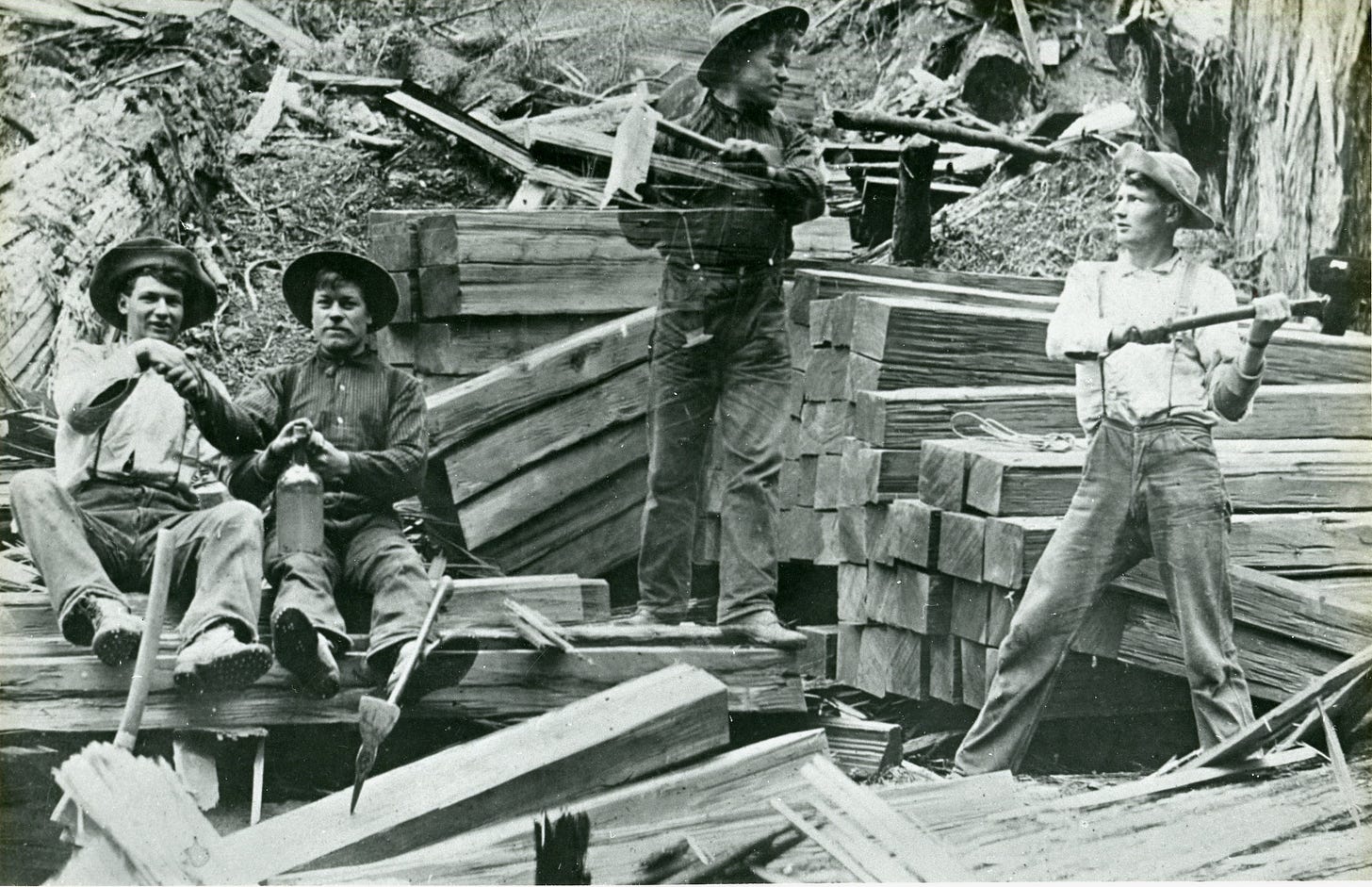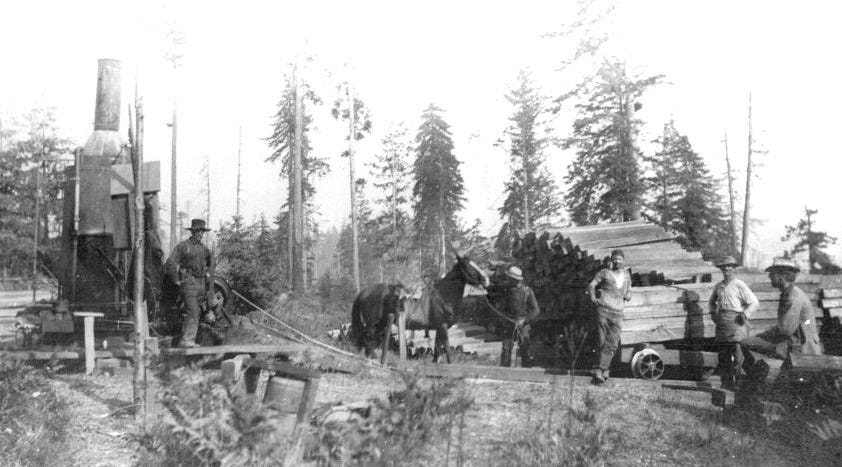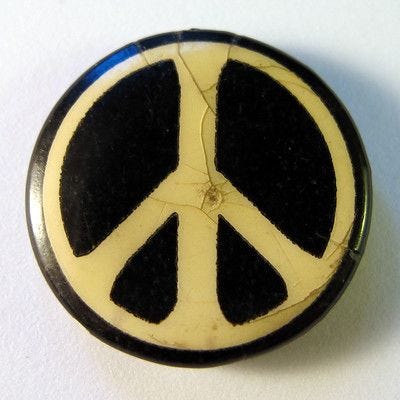
Non-permit building was a tradition in Comptche that began long before the hippies. Mill shacks were tiny temporary dwellings. They were built on demand before permits were a thing, travel-trailer sized cabins built for people working in the forest.
Some timber men cut railroad ties. Others stripped bark as a raw material for the leather tanning industry, called “tanbark.”

Mill shacks housed timber workers in the days before logging trucks, pickups, and roads. Driving to work was not an option. Loggers built tiny redwood cabins to live in while working in the woods. These redwood shacks were positioned throughout the forested hills. As trees were cut, additional cabins sprang up around new harvest sites.
When newcomers arrived in the 1970s, there was just one mill left operating in Comptche. By then people who worked in the timber industry lived in modern homes and drove their pickups out to worksites. So mill shacks sat empty, scattered throughout the forested hillsides. Some old-timers camped in the shacks during deer hunting season. All of them knew where their mill shacks were.
But the shacks began disappearing. There were no traces of being towed out of the woods. The whole shack, gone. Like an alien abduction.
Some project participants who were newcomers in the 1970s knew what happened to the mill shacks. They were recycled.
Hippies are interested in living with Nature not against her. They like to reuse and repurpose things. Building homes with found objects like lumber and driftwood was common during the counterculture. The beaches of Marin County had many driftwood hippie houses. This inspired similar home construction practices in a place with a tradition of unpermitted building.

Walking or horseback riding through the vast woods surrounding Comptche, one rarely encountered property line fences, unlike today. Exploring the redwoods through a lens of counterculture values shows the difference: Share, help yourself, take only what you need. Versus, harvest resources to pay for and own what you need.
The mill shacks are emblematic of the social values being challenged during the counterculture, and causing conflict in Comptche between newcomers and old-timers.
I learned from participants that a group of newcomers exploring the woods came upon numerous empty shacks. Unused housing just sitting there, seemingly abandoned. They had an idea: disassemble them nail by nail, preserving the nails for reuse. They carried the boards out to the nearest road. After a few trips, they had gathered from the forest to build a house: lumber, nails, and basic hardware. Free for the taking. But not really. The cost was resentment of newcomers.
Rather than reporting theft of their mill shacks, the old-timers relied on tradition and handled the situation locally. Mill shack owners made them disappear. They were torn down, burned, or hauled to different property. One of the surviving mill shacks stands today beside the Comptche Fire House (see top photo).
Up next: Land Use as Common Ground
References for this post:
Spicer, Lisa Gruwell, 2012, c 2014. Finding Common Ground: When the Hippie Counterculture Immigrated to a Rural Redwood Community.







